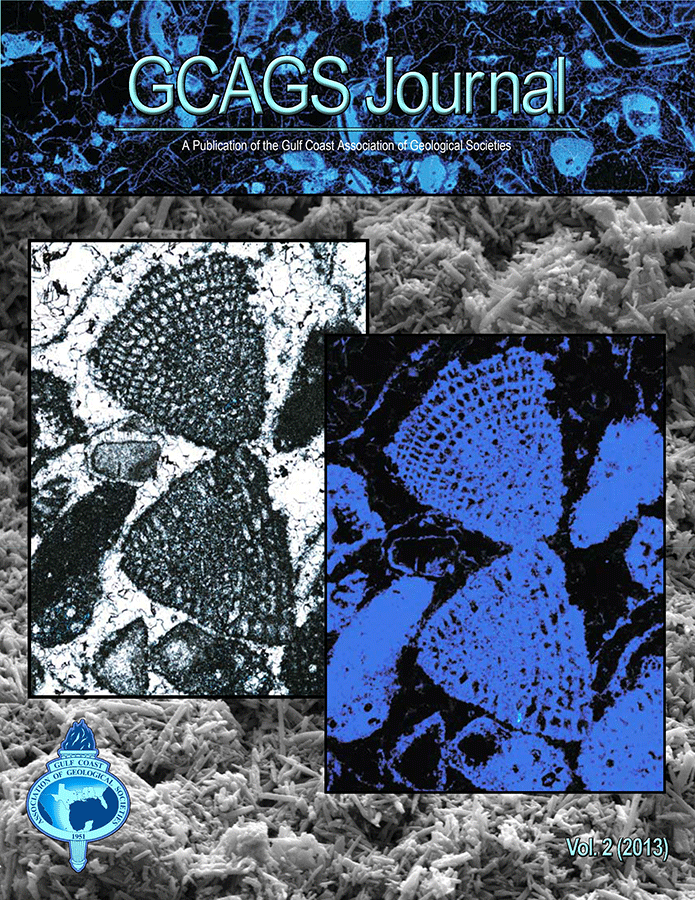
The online availability of the 2013 GCAGS Journal articles is made possible solely by contributions and support of Shell.
Contents
Preface
Micropores in Carbonate Mud: Early Development and
Petrophysics
F. Jerry Lucia and Robert G. Loucks
Velocity Model Building Using Tilted Orthorhombic Depth Imaging for Full Azimuth Seismic Data
Yunfeng (Fred) Li, Qiaofeng Wu, and Chuen-Song Chen
Regional Controls on the Formation of the Ancestral DeSoto Canyon by the
Chicxulub Impact
Richard A. Denne and Robert H. Blanchard
Origin and Description of the Micropore Network within the Lower Cretaceous Stuart City Trend Tight-Gas Limestone
Reservoir in Pawnee Field in South Texas
R. G. Loucks, F. J. Lucia, and L. E. Waite
Comparative Stratigraphy of the Eagle Ford Group Strata in
Lozier Canyon and Antonio Creek, Terrell County, Texas
Rand D. Gardner, Michael C. Pope, Matthew P. Wehner, and Art D. Donovan
Flow and Salinity Patterns in the Low-Transmissivity Upper
Paleozoic Aquifers of North-Central Texas
Jean-Philippe Nicot, Yun Huang, Brad D. Wolaver, and Ruth A. Costley
Diagenetic Evolution and its Influence on Petrophysical Properties of the Jurassic Smackover Formation
Thrombolite and Grainstone Units of Little Cedar Creek Field, Alabama
Sandra N. Tonietto and Michael C. Pope |
|
2013 (Vol. 2)

Cover: Examples of micropore systems. Insets represent photomicrographs of Dictyoconus foraminera in grainstone cemented by fine- to medium-crystalline equant calcite in plain-polarized light (left) and in blue UV light (right), which allows areas of micropores to luminesce blue, and top background image illustrates mercury UV-light mosaic of photomicrographs showing micropore network (light blue) in grainstone, all from the Lower Cretaceous strata at Pawnee Field, South Texas (see Loucks et al. herein). Lower background image shows broken surface SEM photograph of minimicrite from core from the western slope of the Great Bahama Bank (see Lucia and Loucks herein).
|

